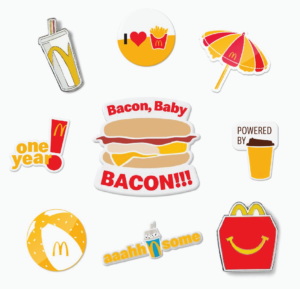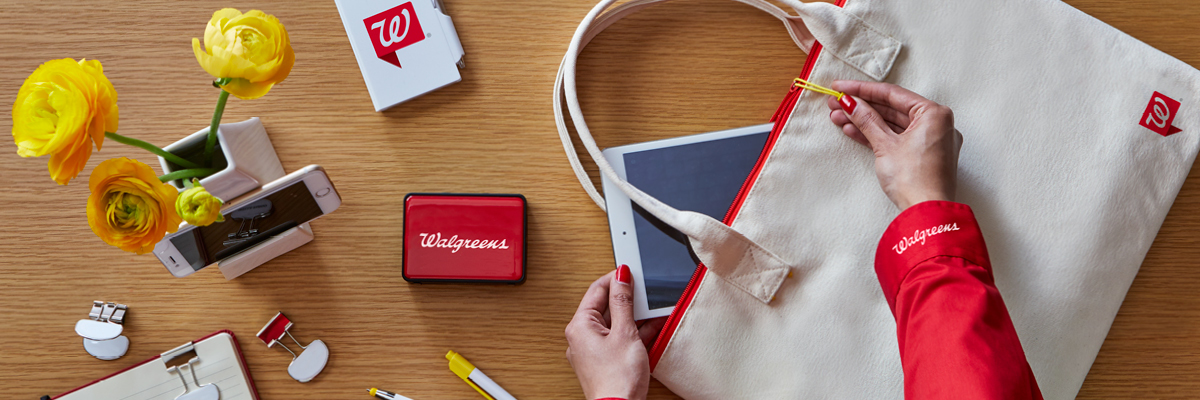In today’s world, cultivating a brand is not just about displaying a logo. It’s all about creating a unique experience for each audience. Research has found that 76% of purchasing decisions are made at the point of sale or contact with the brand. The battle for the consumer’s attention and purchase intent begins by winning the battle of the brands.
Yet, many companies fall short when it comes to branded merchandise collections, much of which is given away at events or at point-of-sale. The marketplace is full of undifferentiated promotional distributors who merely slap logos on products. You’ve seen them at trade shows and handed out by salespersons on calls. Everyone needs a pen or a mouse pad — why not put your logo on one?
The problem is companies take a one-size-fits-all approach to branded merchandise rather than defining audience segments’ specific needs. In order for a brand’s logo to resonate with each audience and be more than a simple logo, it is essential to understand the client structure of a brand and then match your branding initiatives based on your insights into the audiences’ needs. The goal is to provide a unique experience, as opposed to printing logos on everything without rhyme or reason.
Swag vs. Brand Value
All too often, marketers don’t recognize the potential value of the branded merchandise they deliver. The key metric shouldn’t be cost per item, but something more along the lines of impact per item per impression.

Fun and quirky custom pins help McDonald’s Crew Members spruce up their uniforms with a dash of personality.
Moving away from inexpensive trade show swag to branded items that resonate with the audience will return multiple marketing impressions for years. Depending on the item, it will score impressions not only with the recipient but anyone who sees it. Branded apparel is a typical example. The number of marketing impressions generated far outweighs what would occur from a one-time ad spend or a print placement, even incorporating the print multiplier effect.
The goal is to understand the target audience and curate products based on how the product will be used. A generic keychain won’t make a long-term impression. The items should be low cost but high value for the audience. College-age consumers will appreciate different things than members of the C-Suite.
Break Through With 360-Degree Marketing
Sophisticated marketers think in terms of 360-degree marketing programs. Rather than settling for a one-time tactical interaction, the goal is to provide value to the brand at every point of contact with the target audience.
Unlike advertising, in which the brand is removed from the target audience due to the media channels, merchandising creates a direct relationship. The brand creates a moment of truth when it engages with the target audience. A company making consumer products such as beverages can have direct physical contact with its audience at a sports or entertainment event. The branded item becomes a memento of the event that creates a lasting impression with the customer, and this relationship carries over to the moment of truth when the customer makes the buying decision.
Invest in Audience Segmentation

IMS segments Branded Merchandise audiences by Internal and External Stakeholders, ensuring our clients’ product collections fit the needs of each group.
The IMS approach to audience segmentation elevates branded merchandising to a new level. The process starts with understanding the client’s brand and image as well as their corporate mission and vision statements. Then in-depth audience analysis reveals audience segments and the motivations that drive their purchasing behaviors. Those metrics and a deep understanding of the process lead to curating products based on how those items will be used.
A B2C campaign aimed at banking for college students will differentiate the brand from competitors in the field. The items will have to be of intrinsic value to the audience, so the branding is a secondary thought to the user while providing long-term value for the brand. For large campaigns, the cost is a consideration, of course, but an incremental increase in price can deliver long-lasting results. For instance, tech-related items such as a thumb drive will perform better than a key chain or water bottle for the right audience group.
The merchandise must be able to make it past the gatekeeper who may be monitoring mail for high-value clients in the C-Suite. These targeted campaigns require exciting packaging and other signifiers of high value to reach the intended recipient. There may be a clear call to action, such as an invitation to a phone call or online interaction. The item should tie to the marketing narrative to drive a response.
Some campaigns in the financial services sector have achieved a 30% response rate with difficult-to-reach clientele. Given the revenue potential of the relationship, the return on investment can be astronomical.
Employ a Strategic Approach to Branded Merchandise Curation
In merchandising, the hard work of brand development and audience segmentation should be done first to develop a strategic foundation for planned campaigns and ad hoc opportunities. The IMS process is always focused on delivering value to the end consumer while conveying the client’s brand image in every single opportunity.
For a Fortune 200 retail banking organization, IMS took over a disjointed, non-strategic program and rebuilt it using the customer segmentation approach. IMS consolidated 80 branded merchandise suppliers down to a single source. The client organization allowed existing merchandise that did not support the segmented, customer-first philosophy to be liquidated. IMS then restocked the program with an appropriate inventory mix to support the plan going forward.
The segmented branded merchandise’s objective sounds simple: curate items that resonate with customers that also support the brand’s story. But all too often, considerations of cost, existing relationships, and inadequate audience knowledge result in a muddled brand voice and higher prices. Brands can build a better experience — often doing more with less — by starting with the customers first.
To learn more about our approach to curating successful Branded Merchandise programs, visit our Branded Merchandise page or sign up for the IMS Insights Newsletter.

Article Author: Mark Lenox
Mark currently directs the Creative division of IMS, developing solutions for many Fortune 50 clients. He has over twenty years of brand strategy, design, and product development expertise in start-up through global Fortune 500 companies. Mark is skilled in marketing, merchandising, business planning, commercialization and, sales through e-commerce, specialty, mass, and home-shopping channels.

